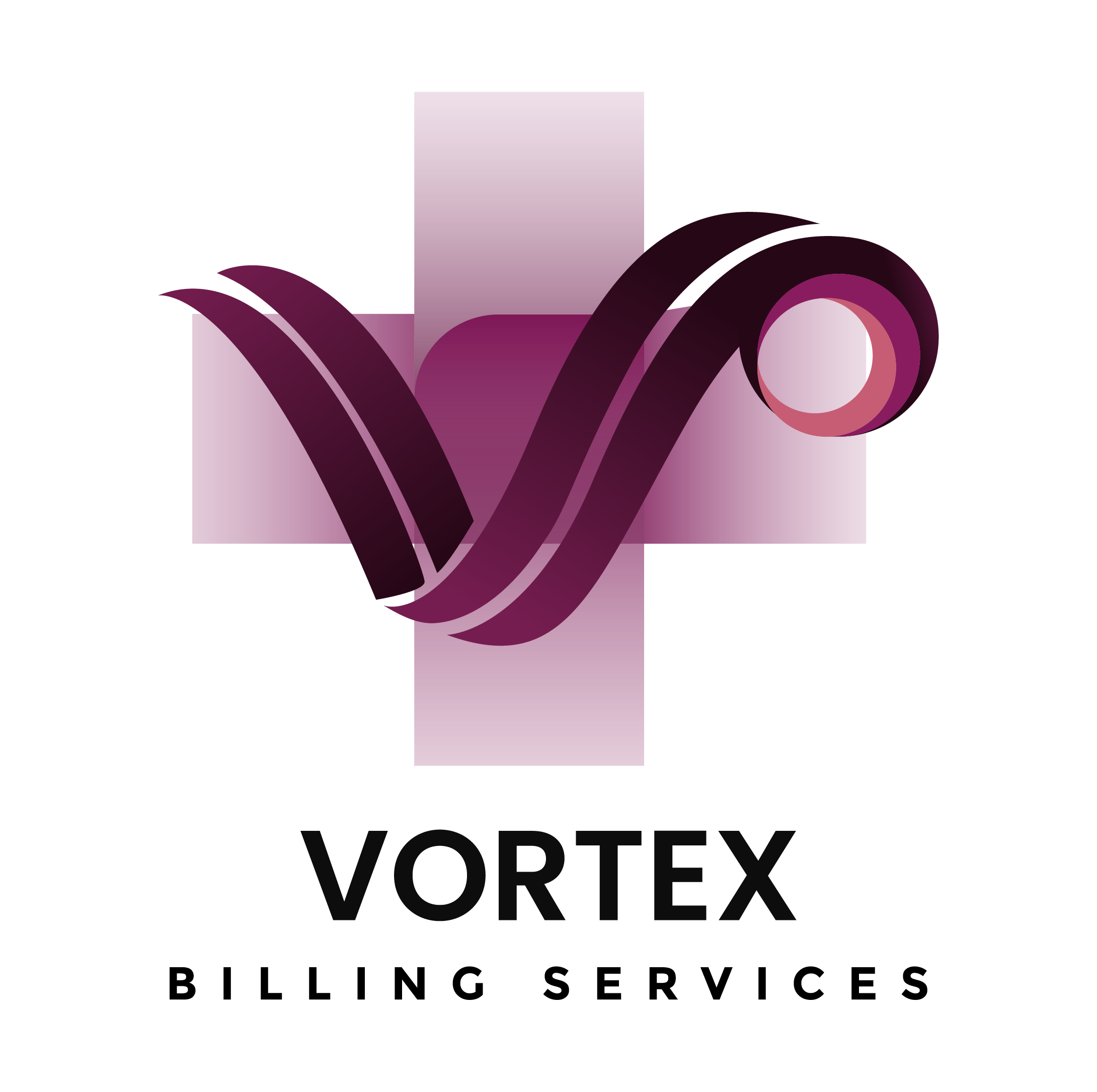The Future of Revenue Cycle Management (RCM Medical) in 2025: A Landmark Year of Transformation
Revenue Cycle Management (RCM Medical) is evolving rapidly, and 2025 is poised to be a landmark year for the transformation of how healthcare providers in the USA handle their billing, compliance, and administrative functions. RCM Medical trends are being shaped by cutting-edge technologies, shifting patient expectations, tighter regulations, and increasing pressure for cost-efficiency. So what’s the future of RCM Medical really look like?
Here’s the short answer: The future is digital, patient-focused, compliance-driven, and automated. Whether you’re a solo provider, a growing clinic, or a large healthcare organization, staying ahead of RCM Medical trends is essential to optimize collections, reduce denials, and enhance transparency in your practice.
Let’s dive deep into what 2025 holds for RCM Medical and how you can adapt to succeed.
Understanding RCM Medical and Its Role in Healthcare
What is RCM Medical?
RCM Medical, short for Revenue Cycle Management in the medical field, refers to the process of managing all the administrative and clinical functions associated with billing, collecting, coding, and revenue generation. It starts the moment a patient schedules an appointment and ends when the final payment is collected and posted. The goal? To ensure a seamless, compliant, and efficient cash flow cycle for healthcare providers.
In 2025, RCM Medical is not just about sending out claims and chasing payments. It’s a multi-layered operation that includes:
- Patient registration and eligibility verification
- Coding and charge capture
- Claim submission and processing
- Payment posting and reconciliation
- Denial management
- Reporting and analytics
Modern RCM Medical systems integrate with EHRs (Electronic Health Records), practice management software, and even patient engagement tools to create a unified, automated ecosystem that reduces errors and increases profitability.
Why RCM Medical is Critical for Healthcare Providers
In a complex and highly regulated healthcare landscape, RCM Medical ensures providers don’t leave money on the table. With margins already tight and overheads increasing, managing the revenue cycle efficiently means the difference between growth and financial stress.
Here’s why RCM Medical is critical:
- Reduces claim denials and billing errors
- Improves cash flow and collection rates
- Ensures compliance with changing regulations
- Frees up administrative staff to focus on patient care
- Provides insights through reporting and analytics
For practices across the USA, especially those expanding or adapting to new care models like telehealth, a modern RCM Medical approach is not just nice to have—it’s a necessity.
Key Challenges Driving Change in RCM Medical
Rising Costs and Administrative Burden
Let’s face it—healthcare in the USA is expensive, and the cost of operations is climbing. Practices and clinics are under pressure to deliver more with fewer resources. Staff shortages, inflation, and an increasing number of administrative tasks have forced many providers to rethink how they manage their revenue cycle.
RCM Medical is central to this shift. Automating tasks like claim processing, denial follow-up, and payment posting reduces human error and administrative burden. In fact, healthcare organizations that automate even 50% of their RCM Medical tasks report 30-40% faster reimbursement and up to 25% fewer claim denials.
But it’s not just about cost. The average medical billing claim can involve more than 30 touchpoints across different systems. Without streamlined RCM Medical processes, practices risk delays, miscommunication, and lost revenue.
Increasing Regulatory Demands and Compliance Pressures
In 2025, compliance will be more important—and more complex—than ever. From CMS (Centers for Medicare & Medicaid Services) policy changes to HIPAA privacy rules, providers must navigate a dense web of regulations. Failure to comply can lead to hefty fines and legal repercussions.
RCM Medical is evolving to meet these challenges by integrating real-time compliance checks and automated alerts into billing systems. Features like:
- Real-time eligibility verification
- Automated modifier applications
- Audit trail logging
- Secure encryption for PHI (Protected Health Information)
…are no longer optional—they’re essential for risk management. Healthcare providers who implement tech-enabled RCM Medical platforms will be better equipped to stay compliant and avoid costly penalties.
Top Trends in RCM Medical for 2025
AI and Machine Learning in RCM Automation
Artificial Intelligence is revolutionizing RCM Medical workflows. In 2025, AI isn’t just a buzzword—it’s powering real solutions that are saving time and boosting revenue for medical practices. From intelligent coding assistance to predictive analytics for claim approvals, AI is reducing the manual workload in profound ways.
Here’s how AI is transforming RCM Medical:
- Smart claim scrubbing: AI detects coding errors before submission
- Predictive denials management: Anticipates claim denials and suggests fixes
- Natural Language Processing (NLP): Converts clinical notes to billable codes
- Auto-prioritization: Flags high-dollar claims for faster processing
AI not only speeds up the billing process but also learns and improves over time. For practices struggling with delays, denials, or slow reimbursements, incorporating AI-driven RCM Medical platforms could be the single biggest upgrade in 2025.
Shift to Cloud-Based RCM Solutions
The migration to cloud-based systems is one of the most significant RCM Medical trends in 2025. Traditional on-premise billing systems are rapidly becoming obsolete as clinics and healthcare providers demand flexibility, real-time data access, scalability, and security. Cloud-based RCM platforms check all these boxes—and more.
Why are medical practices across the USA making the shift?
- Accessibility from anywhere: Providers and billing staff can manage the revenue cycle remotely.
- Real-time updates: No delays in data synchronization, reporting, or claim status.
- Enhanced security: Compliant with HIPAA and other federal standards, cloud platforms offer encryption, two-factor authentication, and automatic backups.
- Scalability: Whether you’re a small practice or expanding rapidly, cloud-based solutions can scale with your needs.
- Lower IT overhead: Say goodbye to servers, manual updates, and costly maintenance.
RCM Medical in the cloud isn’t just about convenience—it’s about empowering providers with agility. Practices can respond faster to changes in payer rules, regulations, or patient needs. This agility is crucial for surviving—and thriving—in a competitive marketplace.
Personalized Patient Billing Experiences
2025 marks a shift toward consumer-style healthcare, and RCM Medical is at the forefront of this change. Patients now expect the same clarity and ease from their medical bills as they get from Amazon or Uber. Confusing statements, delayed bills, and lack of transparency no longer cut it.
Modern RCM Medical systems are designed to deliver a more patient-centric experience. Key features include:
- Upfront cost estimations before treatment
- Mobile billing and payment portals
- Automated payment reminders via SMS/email
- Itemized bills with plain-language descriptions
- Flexible payment plans tailored to the patient’s needs
This transformation isn’t just about improving satisfaction—it boosts collections. When patients understand what they owe and why, they’re more likely to pay on time. Personalized billing within RCM Medical builds trust and reduces the administrative time spent on follow-up calls and disputes.
Providers that invest in patient-friendly RCM platforms will stand out in a crowded healthcare market where experience is as important as care quality.
Advanced Analytics and Predictive Forecasting
In 2025, data is king—and RCM Medical is harnessing it like never before. Advanced analytics and predictive forecasting tools are helping healthcare organizations not only understand their revenue cycle but anticipate future trends.
These tools can:
- Predict claim denials based on payer behavior and historical data
- Forecast cash flow for better financial planning
- Track key KPIs like days in AR, first-pass resolution rate, denial rates, etc.
- Identify process bottlenecks and staff productivity metrics
Imagine knowing ahead of time which claims are likely to get denied, or which billing codes are frequently flagged. With predictive RCM Medical tools, practices can proactively resolve issues before they become costly.
This level of insight is invaluable, especially for growing practices that need to make smart decisions on staffing, budgeting, and expansion. Forward-thinking providers who embrace analytics-driven RCM Medical systems will have a strategic advantage in 2025.
Compliance and Transparency as Core Pillars
How Tech-Driven RCM Enhances Accuracy and Security
The healthcare industry is under constant scrutiny, and with good reason—mistakes in billing and data handling can lead to serious consequences. In response, RCM Medical is becoming more compliance-focused, thanks largely to advanced technology.
Here’s how new RCM systems improve compliance:
- Automated code validation against ICD-10, CPT, and payer-specific rules
- Real-time eligibility verification to avoid unauthorized treatments
- Audit logs that track every change in patient data or billing status
- Built-in alerts for coding anomalies or documentation gaps
- End-to-end encryption for all patient communications and financial data
Accuracy is not a luxury—it’s a necessity. A single miscode or a missed modifier can trigger a claim denial or an audit. That’s why in 2025, providers must rely on tech-powered RCM Medical solutions that reduce human error and enhance transparency.
Ensuring HIPAA and CMS Compliance in 2025
Both HIPAA and CMS regulations have evolved, and 2025 is seeing an increase in enforcement actions. Non-compliance isn’t just a technical issue—it’s a business risk.
To stay protected, modern RCM Medical platforms are built with compliance in mind. Features include:
- Secure user authentication protocols
- Role-based access controls for sensitive data
- Comprehensive audit trails
- Automated CMS updates embedded in claim rules
Healthcare providers that ignore compliance do so at their own peril. But those who proactively adopt compliant, transparent RCM Medical systems not only avoid penalties—they gain patient trust and reputational advantage.
The Rise of End-to-End RCM Service Providers
Benefits of Partnering with Full-Spectrum RCM Vendors
In 2025, more healthcare organizations are outsourcing their entire revenue cycle to specialized RCM vendors. These full-service providers handle everything from appointment scheduling and coding to claim submission, denial management, and even patient communication.
Why the surge in partnerships?
- Expertise in complex billing systems and payer policies
- Reduction in overhead and staffing costs
- 24/7 service models that boost efficiency
- Integrated technology platforms that streamline workflows
- Access to benchmarking and performance insights
A good RCM partner doesn’t just process claims—they help you grow by providing strategic insights and industry best practices. Especially for new and expanding practices in the USA, outsourcing RCM Medical to a trusted partner frees up valuable time and reduces risk.
What to Look for in a Reliable RCM Partner
Choosing the right RCM Medical service provider can make or break your revenue cycle. So what should you look for?
- Experience in your specialty
- Transparent pricing and reporting
- Proven track record with compliance
- Robust security measures
- Scalability for future growth
Whether you’re a solo practitioner or a multisite clinic, finding the right RCM partner can be a game-changer. In 2025, the most successful practices are those who know when to delegate and who to trust.
Cost-Effectiveness and Scalability for Growing Practices
Leveraging RCM for Budget Optimization
As medical practices across the USA face tightening budgets and increasing operational costs, RCM Medical has emerged as a strategic tool for cost optimization. While many assume revenue cycle management is merely about collections, it’s actually a driver of operational efficiency when properly managed.
Here’s how RCM Medical contributes to cost savings:
- Fewer billing errors lead to fewer denied claims, which translates into less rework and faster reimbursement.
- Automation of repetitive tasks reduces the need for large billing teams, cutting labor expenses.
- Standardized workflows ensure consistent processes that lower time wastage and bottlenecks.
- Centralized dashboards and reporting reduce the need for third-party analytics tools.
For example, practices that adopt a fully integrated RCM platform have reported cost reductions of 20–30% within the first year. That’s because automation not only cuts human effort but also eliminates outdated software, unnecessary subscriptions, and inefficient third-party tools.
With inflation and labor costs continuing to rise in 2025, leveraging RCM Medical systems built with budget optimization in mind is no longer optional—it’s a necessity.
Scalability Solutions for New and Expanding Clinics
Growth is exciting—but it brings complexity. As practices expand to multiple locations or specialties, the traditional billing systems that worked for a single provider often buckle under the pressure. Enter scalable RCM Medical systems, designed to grow as you grow.
Modern RCM platforms provide:
- Multi-location management with centralized billing and reporting
- Customizable workflows for different specialties or provider types
- Cloud-based access for seamless onboarding of new staff and locations
- Automated rule sets for various payers, regions, and services
Scalability is also about flexibility. Whether you’re launching a satellite office or adding telehealth services, your RCM Medical system should adapt without requiring massive IT overhauls.
Practices in 2025 that prioritize scalable, cloud-ready, and modular RCM solutions will find it easier to expand services without sacrificing efficiency or compliance.
The Patient’s Role in RCM Medical Evolution
Increasing Patient Responsibility and Transparency
In today’s high-deductible insurance landscape, patients are responsible for a larger share of their healthcare costs. That shift in financial responsibility means they are also more engaged—and more critical—of the billing process. In 2025, RCM Medical must put the patient at the center.
Patients want clarity. They want to know:
- What their insurance covers
- What they owe out of pocket
- When payments are due
- How to pay easily and securely
RCM systems now include patient engagement tools such as:
- Upfront cost estimators
- Mobile bill pay with card-on-file options
- Text/email alerts for bills and payment reminders
- Integrated portals for bill review and dispute resolution
Transparent billing practices don’t just reduce confusion—they directly impact revenue. A recent study showed that practices using patient-friendly RCM tools saw a 20% increase in patient payments within 30 days.
In short, if your RCM Medical platform doesn’t prioritize transparency, your collections—and reputation—will suffer.
Empowering Patients with Digital Billing Tools
Patients are tech-savvy. In 2025, they expect the same kind of digital experiences from their healthcare provider as they do from online retailers. This means fast, intuitive, and secure billing processes.
Here’s what digital empowerment looks like in RCM Medical:
- Mobile-friendly bills with easy-to-understand breakdowns
- Interactive portals showing billing history and real-time balances
- One-click payments using Apple Pay, Google Pay, or bank transfers
- Chatbots that answer billing questions 24/7
- Options to apply for payment plans or financing
These tools improve not just satisfaction but also payment timelines. When patients can manage their financial responsibilities just like they manage their Amazon orders, collections become frictionless.
Integrating RCM with EHR and Practice Management Systems
Seamless Data Flow for Improved Workflow
Integration is a buzzword, but in RCM Medical, it’s a game-changer. In 2025, disconnected systems are the root cause of many billing delays and errors. Seamless integration between EHR (Electronic Health Records), practice management software, and RCM tools is essential.
With integrated systems:
- Patient data auto-populates across platforms, eliminating manual entry
- Charge capture flows directly from clinical documentation to billing
- Eligibility and benefits checks happen in real-time at the front desk
- Claims are generated instantly upon appointment completion
The result? Fewer errors, faster reimbursements, and happier staff. Medical practices in the USA are increasingly demanding interoperable systems that eliminate duplication and reduce administrative burden.
In 2025, integration isn’t just an IT feature—it’s an RCM necessity.
Reducing Claim Denials through Integrated Systems
Disconnected systems often lead to missed or incorrect data—one of the leading causes of claim denials. But integrated RCM Medical solutions flag issues before the claim even goes out.
Here’s how:
- Eligibility is verified in real-time before service delivery
- Coding tools suggest correct codes based on documentation
- Scrubbing tools flag errors or missing modifiers before submission
- Dashboards alert billing staff to payer-specific changes
Reducing denials is one of the most powerful ways to improve collections. With denial rates hovering around 10% nationwide, eliminating even half can mean thousands of dollars in recovered revenue monthly.
Practices that prioritize integration in their RCM Medical ecosystem will lead the way in revenue performance and operational efficiency.
The Impact of Telehealth and Remote Care on RCM
Adapting RCM Strategies for Virtual Care Models
Telehealth isn’t a pandemic trend—it’s here to stay. And it has unique implications for RCM Medical. From different billing codes to new documentation requirements and payer rules, virtual care requires a specialized billing approach.
Key telehealth-related RCM needs include:
- Accurate place-of-service and modifier codes
- Payer-specific coverage and reimbursement rates
- Real-time verification of telehealth benefits
- Integrated video platforms with billing automation
2025 brings even more demand for remote care, especially in rural areas and among younger, tech-native patients. Practices that don’t align their RCM Medical strategies with this shift risk underbilling or compliance issues.
Challenges and Opportunities in Remote Billing
Remote care introduces new challenges like:
- Managing multi-state licensure and payer rules
- Handling patient responsibility for out-of-network services
- Processing consent forms and documentation digitally
- Delays in claim adjudication for less common virtual codes
But the opportunities are just as big. Virtual visits often have lower no-show rates and require less overhead, which improves margins. If your RCM strategy is built to support this model, you can thrive in a hybrid care landscape.
The key is flexibility. Practices that adopt remote-friendly, rule-aware RCM Medical systems will be well-positioned to capitalize on the virtual care boom.
Preparing for the Future of RCM Medical
Building Resilient RCM Strategies
The healthcare landscape is volatile, and as we move deeper into 2025, practices must focus on resilience. Resilient RCM Medical strategies aren’t just about weathering audits or payer changes—they’re about building a system that can adapt, grow, and recover from disruptions.
Here’s what that looks like in practice:
- Diversified payer strategies to avoid overreliance on any single insurer
- Regular audits and RCM assessments to catch issues early
- Cross-training staff to handle multiple functions in billing and coding
- Scenario planning and cash flow forecasting based on predictive analytics
Resilience also means embracing change. Whether it’s AI, compliance updates, or patient payment expectations—successful practices are those that view change as an opportunity, not a threat.
In 2025, investing in RCM Medical strategy is about more than boosting revenue. It’s about protecting the future of your practice, empowering your team, and delivering a better patient experience.
Investing in Training and Talent for 2025
Technology can only go so far without trained professionals behind it. That’s why training is a key piece of the RCM puzzle. Practices must invest in their administrative and billing staff to ensure they’re up-to-date on:
- Coding changes (ICD, CPT, HCPCS)
- Payer policy updates
- Compliance regulations (HIPAA, CMS, etc.)
- Use of RCM software and analytics platforms
Providers should also consider certifications for key RCM personnel, such as the Certified Revenue Cycle Professional (CRCP) or Certified Medical Reimbursement Specialist (CMRS). These programs prepare staff for the complexities of modern RCM Medical operations.
With trained talent and cutting-edge tools working in tandem, medical organizations can build an unbeatable revenue cycle that supports growth, compliance, and superior patient care.
Conclusion
The future of RCM Medical in 2025 is defined by transformation—driven by technology, shaped by patient expectations, and anchored in compliance and cost-efficiency. From AI-powered automation to personalized billing and cloud-based scalability, the changes happening now are setting the foundation for the next decade of healthcare operations.
For practices, clinics, and healthcare providers across the USA, this evolution is not optional. It’s an opportunity. An opportunity to reduce administrative burden, improve revenue performance, stay compliant, and provide better service to patients.
Whether you’re a solo provider, a multi-location group, or a growing telehealth startup, embracing these RCM Medical trends will set you apart. The goal isn’t just to collect more—it’s to operate smarter, faster, and with greater transparency.
Stay informed. Stay adaptable. And most importantly, choose the right RCM Medical partners and tools that align with your mission and future vision.



